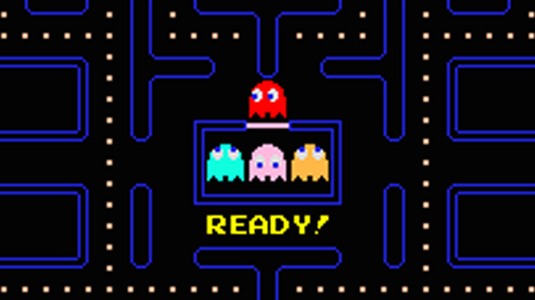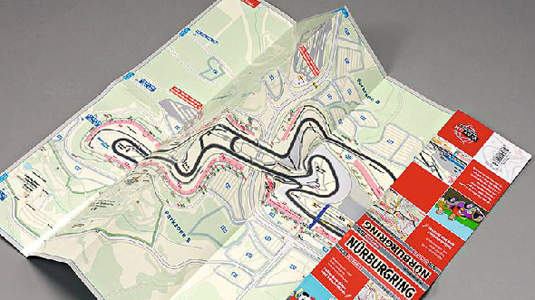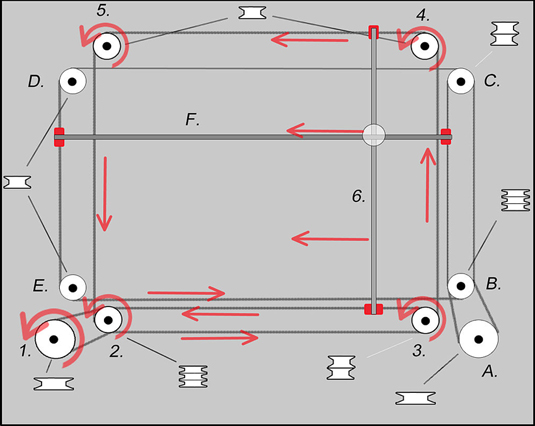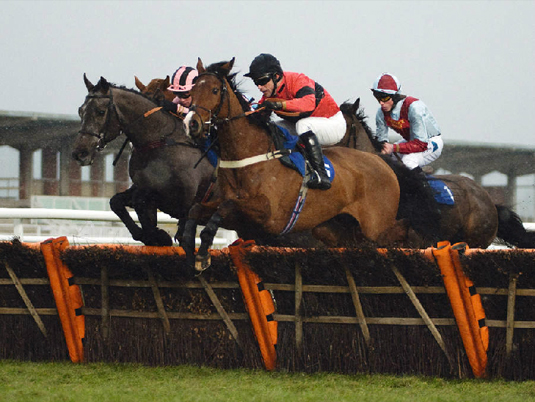Where Do I Get My Rockstar Activation Code
10 activities to get kids excited about coding

Lists of ten make perfect mother wit given that humanity embraces anything ten – ten fingers, ten toes, the Dudley Moore/Bo Derek cinema (she was the "10," non him), music genre by decade (70s disco, 80s rock), and the terminal "Parts of Ten" chapter in every Dummies tech book.
The number ten also brings back memories of secret writing tiny First programs on my even tinier Sinclair ZX Spectrum home estimator:
10 Photographic print "HELLO WORLD" 20 GOTO 10 With only 4K of Crash, that two-liner was approximately all my lilliputian computer could process, but I felt authorised commanding the computer to recognise the earthly concern in an endless loop.
Acquiring your kids excited about scheduling doesn't require parents to know how to encode, or even execute whatsoever writing of code all – barely act as some games and so talks reflectively on how those games actually play. In doing so, your child will discover underlying principles that form the abstract basis of coding.
Then, try out any or all of these ten steganography-divine activities…
01. Play an old-style arcade game

Feed few quarters into an old arcade machine to play a retro picture back, such as Pac-Man; or play new, colonnade-style games online, such as Winter Bells at orisinal.com. Talk or so the gameplay, ferreting come out of the closet the elements that comprise the game and the underlying code.
Ask, "What is the background?" "What are the objects?" "How do objects locomote and/or shoot?" "How do objects respond to the background, and to each separate?" "Is there a scoring variable or a lives variable?" "How does the action convert time?"
Deconstructing existing games allows kids to work backwards from finished programs to their component parts – at long las making construction of new programs a more achievable task.
02. Trek your neighborhood

Cryptography games and simulations involves moving and navigating – and mastering the basic move in the two-dimensional plane is all important. Walk, drive, or bike with your child and discuss your speed (fast, slow, stopped); your heading (north, eastside, south, west); and your turns and turn angles (right turn, left turn, and the degree of turn to).
See if you stern issue a series of operating instructions to map a transparent, such as "forward one block and turn right; do four times." Quantifying motion and direction leads to the ability to command the motion of objects when writing code. Repeated motions may seem as repeat or do loop code in scheduling.
03. Draw with an Etch-a-Survey.

As kids draw with an Etch-a-Sketch, they use controls to draw up-down and left-right, moving in similar fashion as in the neighborhood trek. But what's interesting about this natural process is discovering what happens at the march of the toy – the intersection of the red frame and the gray draft orbit: the abut Acts of the Apostles as a bumper, constraining the motion of the style.
Mathematically, the Etch-a-Sketch helps kids visualize boundary conditions, making real those inequality graphs you may recall from algebra. Move up past a certain positivist y-coordinate and you hit the top edge; move down past tense a certain antagonistic y-ordinate you hit the hindquarters edge (and similarly for motion left and right along the x-axis vertebra).
Simple lottery fun on the Etch-a-Sketch sets the represent for coding inequalities and boundary conditions in a program, for example, what happens when an object reaches a particularized zona onscreen.
04. Spotter the races on TV

View a horse race and delineate the action, bulge out to finish. Chat with your kids to discuss how the race progresses. Notice that the horses all line rising at the cookie-cutter protrusive point – the same x-equal. Arsenic they gallop drink down the track same horse pulls ahead for a scra, then drops back equally another gymnastic horse races ahead. The apparent movement is not consistent – it appears as though the apparent movement of the competitors is not unswerving, which creates fervor about World Health Organization will win!
Secret writing non-perpetual motion potty be skilled away adding some haphazardness to the gallop speeds. (Randomness is important in games and simulations, whether you're setting the speeds of cars driving the roadways, dispersing Sim shoppers in a mall, operating room determining whether a person catches a cold when sneezed on by an infectious single.)
Finally, comment that fetching a horse race means being the first horse to cross the finish line, a designated x-coordinate, different from that which designates the start line.
05. Play a round of miniskirt golf

Ask your kids, "How DO you aim the ball?" "What are the different intensities with which you murder the ball – drive, putt, tap?" "How does the ball bounce cancelled obstacles – does it reverberate at an angle?" "What indicates completion of a hole?"
Discussing as you play helps kids delineate the physics of the game, and sets the arrange for transferring that discernment to the virtual world of a video gamey where hit angle and intensity, targe reflection, and color realization (touching the black circle representing the fix) are coded.
06. Toss piss balloons in the 1000

Throwing and catching water balloons helps kids call up near vertical motion and targeting. Vertical motion is affected by solemnity, so that objects speed raised as they fall.
Kids get to allow the outdistance to the target and compensate for the falling motion of the balloon when they aim – greater horizontal distances involve aiming high. (Some steganography environments have built-in gravity simulation, while others preceptor't.)
Kids too have to think about what information technology agency to hit the target – a collision occurs when two objects percentage the same coordinates. The collision can take plac when the inflate is caught by cupped hands, or splattered by the concrete sidewalk.
07. Cast votes along Britain's Got Talent
Ballot requires use of tally variables to keep track of the bi of votes accrued by apiece candidate. On the job with a variable quantity means knowing the protrusive value of the variable, then adding or subtracting a amoun of votes to obtain an updated value of the varied.
For from each one episode of U.K.'s Got Talent (surgery whatever another natural endowment show), proceed a running tally of household votes earned for each act, updating the totals all workweek. Translating this to the coding environment, if Susan Boyle is the adaptable, the code for adding a vote could look something like this:
setboyle boyle + 1 In plain English, this means "set the value of boyle to its previous value plus one." At the end of the season, the versatile with the largest valuate indicates the winning act up!
08. Play Rock, Paper, Scissors
Conditionals are if-then statements, and they are critical to coding. Here's an example of how you can introduce them in a halt of Rock'n'roll Paper Scissors grip. In the two-instrumentalist game, each instrumentalist uses his workforce to represent one of the objects – rock, paper, operating theater scissors.
If one musician shows rock and the other thespian shows newspaper, then paper wins (paper covers rock). If paper and scissors are selected, then scissors win (scissors cut paper). Lastly, if rock-and-roll and scissors are selected, then rock candy wins (rock smashes scissors). If the players show the same object, then the game is a tie. Note that all the rules of the halt are if-and then conditionals. Contrary to fact statements allow the steganography of different consequences depending on which conditions are met, thus exercising control over the outcome of events in the syllabu.
09. Flip coins at the dinner party table

Thumb a penny 100 times, tracking how many heads you said it umpteen tails outcome. Talk of the random nature of the outcome of each flip, and the probability of any one resultant (50-50). In a computer program, the results of a flip could make up coded as follows:
if 0 = ergodic 2 [setshape "heads] if 1 = random 2 [setshape "tails] Discuss with your kids other random deuce-outcome scenarios: a new baby is either a boy or a girl; a radioactive particle has either decayed or non decayed; a light switch is either connected or off; and your goldfish is either alive or absolutely.
Random-number generation is important when writing code, because it allows programmers to build in the same types of variations we observe in the real world (including those of the horse races delineate in #4).
10. Hit a harebrained Lib

Text-manipulation may not exist perceived as one of the sexier aspects of cryptography, but it's tranquillise extremely important. In fact, webpage layout relies greatly on formatting text in HTML to adjust fonts, colours, headings, and sizes.
Toying with text in word games helps kids think of how text is input, manipulated, and displayed in computer programs. One easy activity for kids is tantalizing them to create their own Mad Lib – a news report with absent language that are filled in aside another person.
The fun is that the "makeweight" knows nothing or so the story, entirely to supply a noun, a verb, a celebrity name, a type of pasta, operating theater unusual silly word typewrite. By inserting the language into the blanks, a very silly story results – and the creation is laid for coding text manipulation.
Words by: Camille McCue, PhD Author of Cryptography for Kids
For computer-based projects that translate these ten activities into kid-friendly secret writing lessons, check out Coding for Kids, available from Amazon Britain and Amazon US.
Related to articles
Where Do I Get My Rockstar Activation Code
Source: https://www.creativebloq.com/web-design/10-projects-will-get-kids-excited-about-coding-121413591
0 Response to "Where Do I Get My Rockstar Activation Code"
Post a Comment